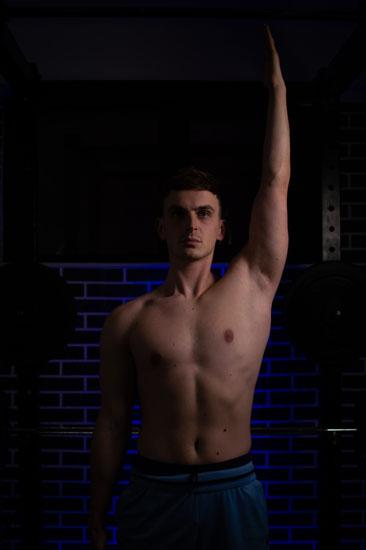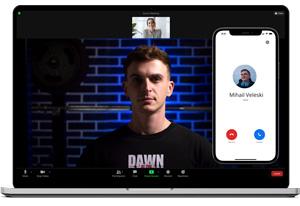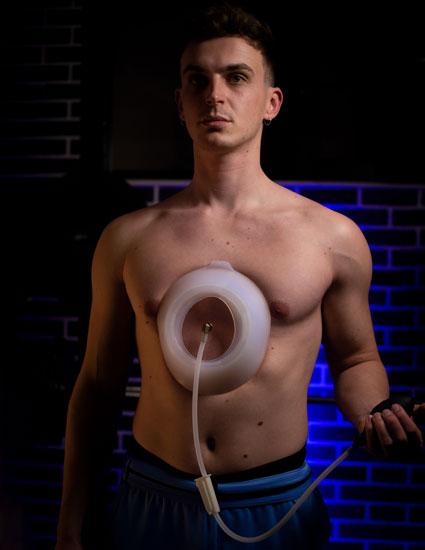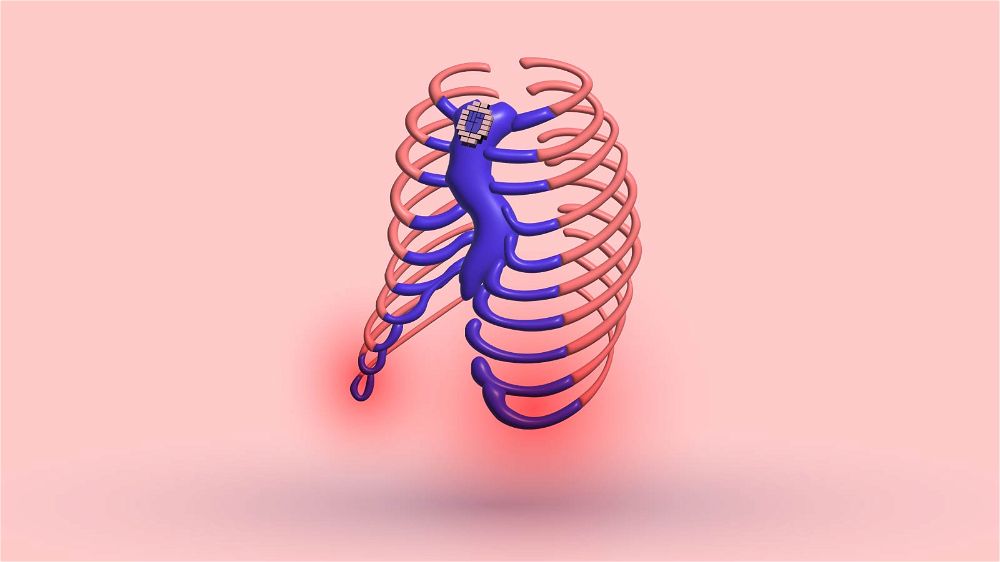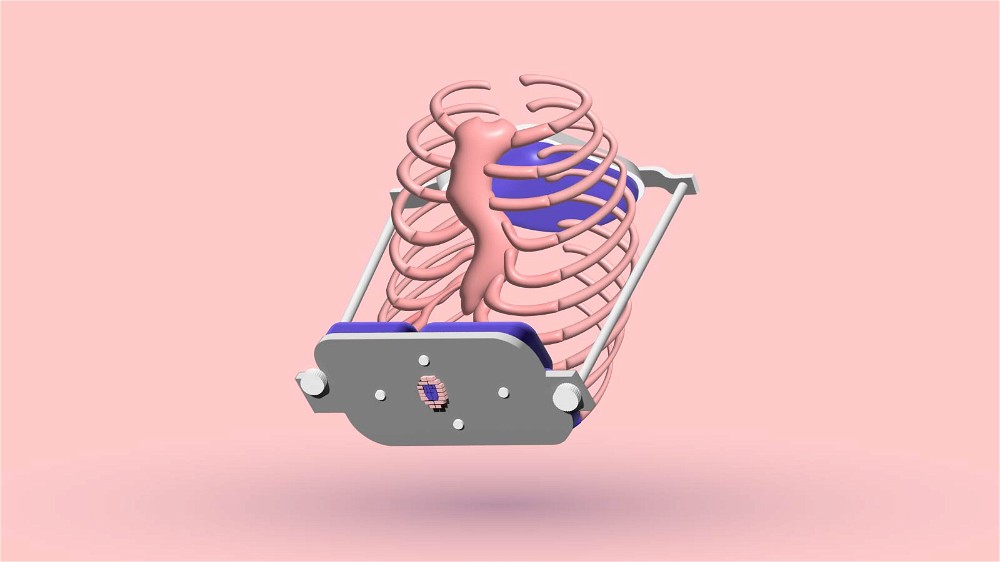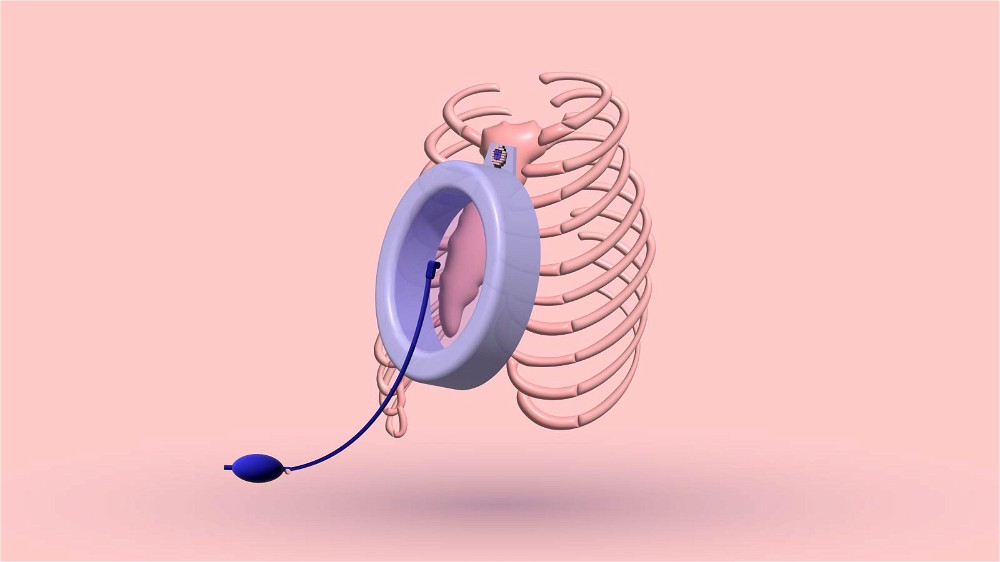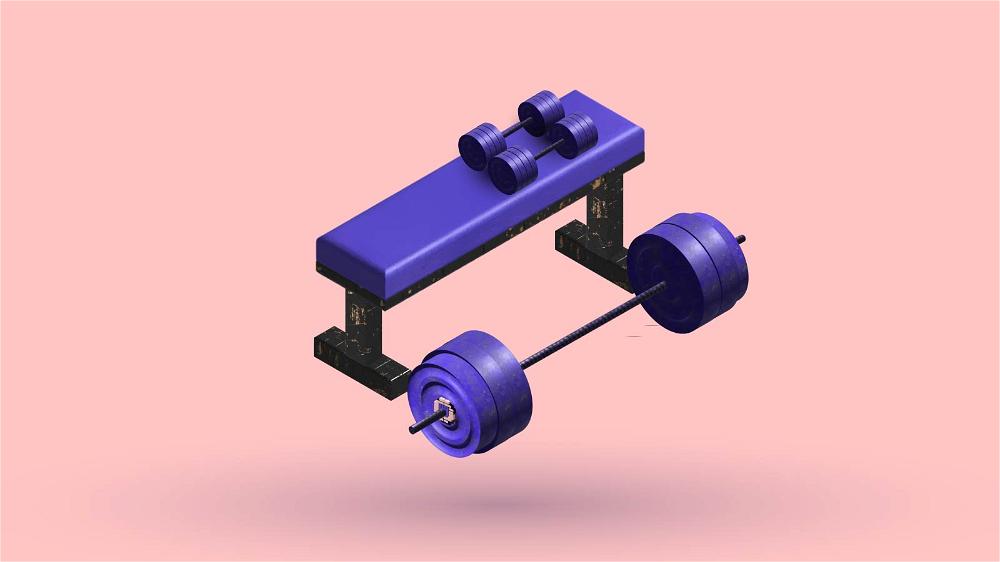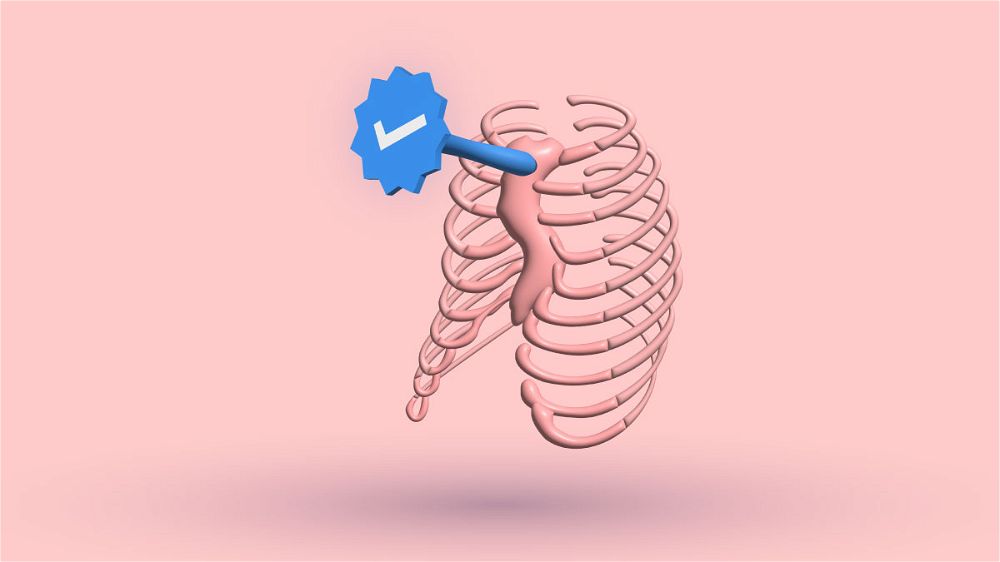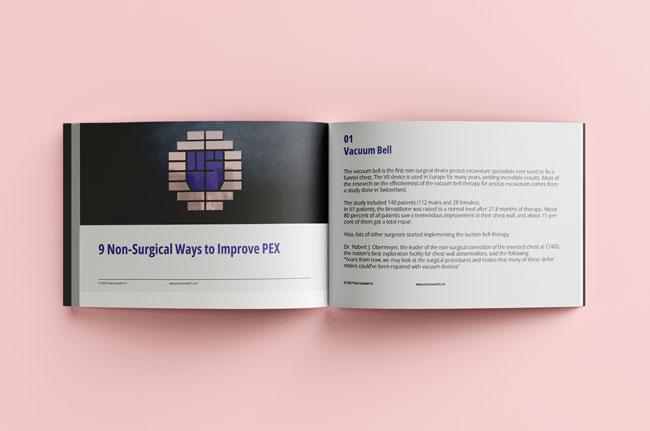Scoliosis is a sideways curvature of the spine that usually occurs in the growth spurt right before puberty hits. According to Mayo Clinic, about 3% of all adolescents have scoliosis. In most people, scoliosis is moderate. However, deformities like pectus excavatum can further worsen the severity of scoliosis as the sufferer ages.
Severe scoliosis can cause a lot of trouble. It can reduce the amount of space in the chest, restricting lung function. If the patient also suffers from a severe pectus excavatum deformity, which is proven to reduce lung capacity in some patients, things get a lot messier.
7 MOST COMMON SYMPTOMS
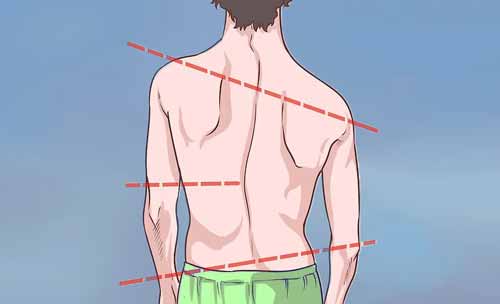
- One shoulder stands higher than the other.
- The waist is uneven.
- One of your hips is higher than the other.
- Rotation or twisting of the spine can cause flared ribs.
- Pain in the lower back, which proceeds to your legs.
- Weakness and tiredness in the spine area while standing for too long.
- Pain in the shoulders, usually while exercising.
7 POSSIBLE COMPLICATIONS

Even though most people think that scoliosis is unharmful, it can cause complications. As stated by MedlinePlus, these are the seven most common possible complications.
- Difficulties in breathing.
- Pain in the lower or upper back area.
- Lowered amount of self-confidence.
- Pain and feeling like your spine is getting damaged.
- Infection to the spine after surgery.
- Nerve or spine injury from non-corrected scoliosis.
- Spinal fluid leakage.
DOES REPAIRING PECTUS EXCAVATUM FIX SCOLIOSIS?
Correcting pectus excavatum surgically can worsen or correct scoliosis. That depends on Cobb's angle. This was unknown until a group of researchers published a study about this subject in 2017.
The study revealed how correcting pectus excavatum impacts pre-existing scoliosis. Seven hundred seventy-nine patients with pectus excavatum who underwent the Nuss procedure between 2007 and 2011 were examined.
Researchers discovered that pectus excavatum repair with a Nuss bar could correct scoliosis. However, when the preoperative Cobb angle is higher than 15°, scoliosis can be worsened. Surgeons must be careful when operating on a pectus excavatum patient with moderate scoliosis (Cobb angle > 15°).
NUSS PROCEDURE CAN CAUSE SCOLIOSIS
A study in 2003 reported two cases of acquired scoliosis following a Nuss procedure to repair a severely indented chest.
A 14-year-old was referred to undergo a Nuss procedure to fix the dent in his chest. Before surgery, a posteroanterior chest X-ray showed no presence of scoliosis. The kid underwent a successful Nuss procedure. Four weeks after the surgery, the boy was seen to have a curvature in the back.
Doctors determined a right-sided thoracic curve with a Cobb angle of 54° at a follow-up. The surgeons decided to stop the curve progression and remove the Pectus bar. After bar removal, the Cobb angle reduced from 54° to 41°. The kid was also given a brace for up to 12 hours daily. After three months, scoliosis disappeared.
The researchers confirmed that the Nuss procedure could cause scoliosis. They concluded that doctors must regularly measure the spine before and after a pectus excavatum surgery.
If scoliosis occurs after surgery, the researchers suggest physical therapy and bracing to fix it effectively. The surgeries were performed successfully on all patients. Postsurgically, scoliosis has developed in two of the patients. This study proves that a Nuss procedure can cause scoliosis.
SECOND STUDY
In research, 406 patients suffering from pectus excavatum underwent a Nuss procedure. The surgeries were performed successfully on all patients. Postsurgically, scoliosis has developed in two of the patients. This study further proves that a Nuss procedure can cause scoliosis.
SCOLIOSIS IN WOMEN
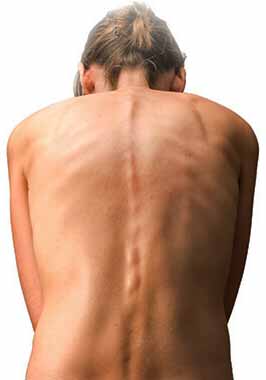
Studies revealed that scoliosis is twice as much in female pectus excavatum sufferers than in males. Scientific research published in 2011 tested 248 patients diagnosed with pectus excavatum. Researchers concluded that 56 out of all patients had scoliosis, with a Cobb angle higher than 10°.
That's approximately about 22.58%. They also concluded that scoliosis was more prominent in females. The study showed a significant correlation between scoliosis and pectus excavatum. People suffering from chest deformity have a higher chance of having scoliosis than regular people.
ADDITIONAL STUDY
Thirty-seven patients with pectus excavatum were divided into two groups in a study published in 2017. The study revealed no significant difference between the severity of pectus excavatum and the severity of scoliosis.
However, scoliosis will worsen as the patient gets older. That is caused by the heart, which is compressed by the sunken chest. It produces a horizontal push that forces the spine to the right.
There was a notable difference in the two age groups in the severity of scoliosis. The Cobb angle in the adult group was much higher than in the kid's group. 28 out of all 37 patients tested had a Cobb angle > 10°.
20 out of 28 of these patients were adults. The scoliosis severity is higher in the adult group. Also, roughly 90% of all patients in the adult group had scoliosis. On the other hand, scoliosis was present in 53.33% of the patients in the kid's group.
HOW DOES PECTUS EXCAVATUM CAUSE SCOLIOSIS?
Researchers believe it happens when the bones get more calcified. The costal cartilages get fragile and more ossified with age. The funnel chest creates an internal horizontal compression that pushes the heart to the left.
The heart creates a counterforce that pushes the thoracic vertebrae to the right, further worsening the curvature. That is why most patients with sunken chests are bent to the right. This internal force is believed to worsen scoliosis as the pectus excavatum patient ages.
WHAT TO DO
Once scoliosis is diagnosed and you know that you have the pectus excavatum deformity, you should start treatment immediately. Don't let scoliosis get worse day by day.
DOUBLE CRUSH TO THE THORAX
The combination of scoliosis and pectus excavatum leads to more significant cardiopulmonary impairment than if they occur separately.
This is called a "double crush to the thorax. "The combination of both thoracic abnormalities aroused the interest of surgeons in the last few years.
MOST COMMON TYPE OF SCOLIOSIS FOR PECTUS EXCAVATUM
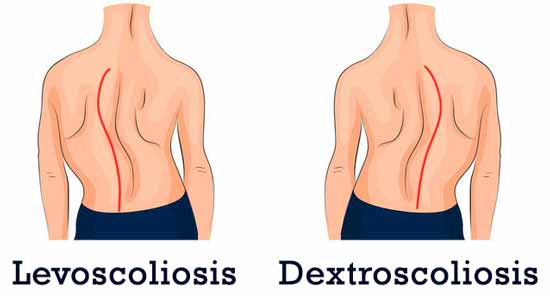
As stated in a 2017 scientific research, 20 out of 37 patients with pectus excavatum had a spinal curvature to the right. That is called dextroscoliosis.
Eight out of 37 patients had curvature to the left (levoscoliosis). The remaining patients had no scoliosis, or their Cobb angle was not higher than 10°. The study concluded that dextroscoliosis is the most common type of scoliosis in pectus excavatum patients.
DEXTROSCOLIOSIS
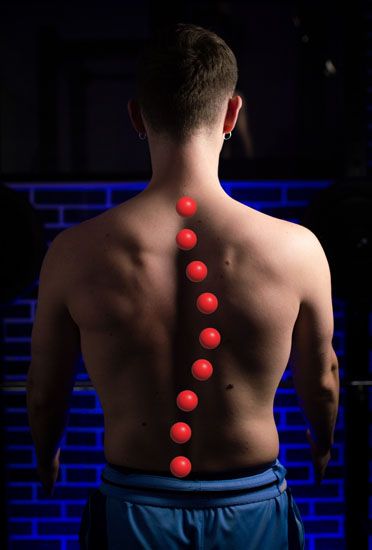
Dextroscoliosis is the most common type of scoliosis in pectus excavatum patients. It can be corrected through physical therapy, bracing, and surgery. It is a type of scoliosis when the spine curves to the right.
In pectus excavatum patients, it usually affects the middle-to-upper back, also known as the thoracic spine. This is confirmed in a 2014 research where they concluded that 85-90% of all adults have dextroscoliosis.
SYMPTOMS
- Asymmetrical shoulders.
- The right shoulder is usually higher than the other.
- Protruding ribs, usually on the left side.
- Uneven waistline.
- Apparent curvature in the spine.
- Head and body tilt to one side.
PROBLEMS
According to Healthline, dextroscoliosis can press other organs in your body if it is severe. It can lead to:
- Shortness of breath.
- Pain in the chest and back.
- Leg pain.
- Problems while urinating or defecating.
HOW TO KNOW IF YOU HAVE IT
If you're wondering what type of scoliosis you have, you should ask a doctor for a physical examination. That's the safest way to proceed in treating this type of scoliosis. The doctor will take a look at the following things:
- Spine from the rear side.
- Check for asymmetry, the height of your shoulders, waist, and hip.
- Whether one side of your rib cage is protruding.
- He will make you do Adam's forward bending test.
- Spine X-ray to see the exact location and the severity of the curve.
EXERCISES
According to MedicalNewsToday, a few exercises will improve scoliosis symptoms non-surgically. They will also lengthen the spine, expand the chest, and strengthen the musculature in your back. They are:
GLUTEAL STRETCH

The first stretch to fix Dextroscoliosis is targeting the glutes. To do this exercise, lie on the floor or on a gym mat if you have one. Bend both knees right in front of you, and place the right foot on your left knee. Then, lift both legs, and interlace your fingers behind the left knee/hamstring area. Pull gently toward your chest until you feel a gentle stretch on your glutes. As written by MedicalNewsToday, holding this stretch for at least 20 seconds on each leg is recommended.
Then, switch the legs and repeat the stretch for the other leg. If you have dextroscoliosis, it is usually the right glute that will feel tighter than the other. That was the case with me. Because of that, I stretched my right leg more than my left until my dextroscoliosis was corrected.
KNEE TO CHEST STRETCH
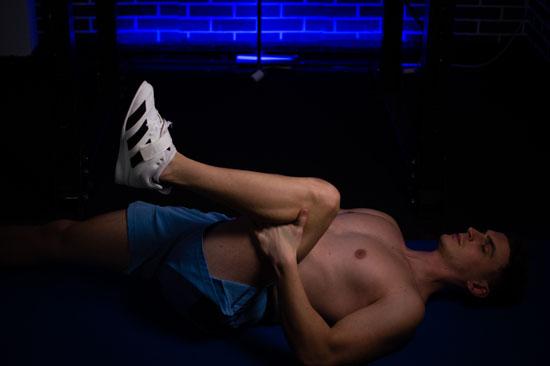
This is a fantastic stretch for the hips and the lower back. To start the exercise, slowly roll yourself down on your back, one vertebra at a time.
Then, bend both knees while lying flat on a surface. Please put your hands behind one knee, and pull it gently toward your chest. Then, fully straighten the other leg on the surface.
You will feel the stretch in the back of the hip of the leg you're pulling. At the same time, you'll feel it in front of the opposite hip. Just like the previous exercise, hold this stretch for about 20 seconds.
Repeat with your other leg. Perform three sets for each leg, totaling 120 seconds of stretching. For faster results, I recommend you repeat this three times a day.
KNEELING LUNGE STRETCH
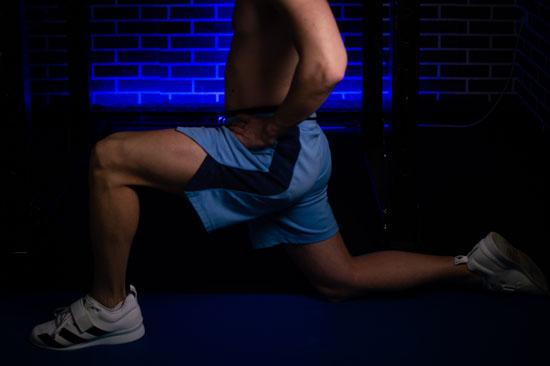
This stretch will help you increase mobility and control in your hips. To start:
- Get into a push-up position.
- Raise your left leg and bring it forward toward your left hand.
- Put your foot right next to the hand.
Make sure your knee stands directly over your foot. Don't let it go past your toes. This will put a more significant stretch on the hip, which is the point of this exercise.
Then, bend the knee of the right leg (straightened leg) and slowly put it on the floor. Bend forward at the hips. Do this slowly. There is no point in rushing. Breathe into the stretch. As you exhale, bend the hips forward. Hold this stretch for about 30 seconds. Repeat with your right leg.
SHOULDER STRETCH
Stand tall with your feet set at shoulder-width-apart. Fully extend your left arm and point up to the ceiling. Stretch the opposite hand down as far as you comfortably can. Make sure you keep your body sturdy without leaning to the side. Hold this stretch for about 30 seconds. Lower the left arm and repeat with the right arm up.
RECLINED BUTTERFLY STRETCH

The lying butterfly stretch is an excellent opener for tight hips. You'll feel the benefits instantly. Lay down on your back. Bend at the knees and bring the ankles to touch together.
Put your hands on both knees and gently press the knees away from each other. Don't push this stretch. Allow the hips to stretch more and more with each breath, hold the stretch for about 30 seconds, and repeat three times.
LEVOSCOLIOSIS
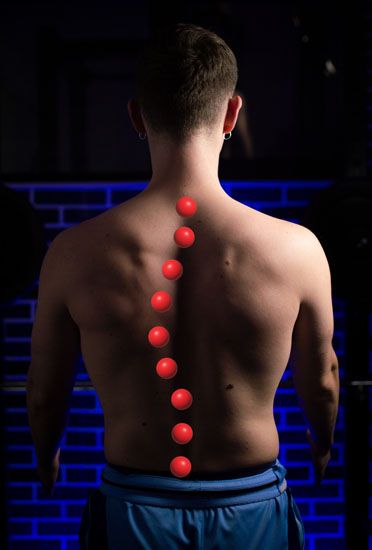
Levoscoliosis is scoliosis in which the spine curves to the left side. The curve occurs in the lower back or, in some cases, the middle back. Generally, the symptoms are the same as in dextroscoliosis. The only difference is that they will happen on the other side of your body.
TREATMENT
- Brace – As mentioned by MedicalNewsToday, wearing a back brace can't reverse a spinal curve. However, according to a study, it can stop scoliosis from progressing in about 80 percent of children. It is recommended to wear the brace for about 16 to 23 hours a day. For best results, take it off only while you're exercising or showering.
- Surgery – In severe cases of levoscoliosis, surgery is required. Extreme curvature can damage internal organs and hinder bodily movement.
- Chiropractic Treatment – Pectus excavatum patients suffering from levoscoliosis can benefit from visiting a chiropractor specializing in scoliosis.
Exercises
The Scoliosis Research Society claims that "physiotherapy scoliosis-specific exercises" (PSSEs) can help treat levoscoliosis. This model is not considered an alternative to bracing or surgery. However, it can be used as a therapeutic intervention, meaning you can use it alone. In the report of this 2016 study, there is strong evidence that the PSSE model helps treat scoliosis with slight-to-moderate curvature.
MAKE AN APPOINTMENT WITH AN ORTHOPAEDIC DOCTOR
It is in your best interest to visit an orthopedic doctor to discuss the severity of scoliosis. The doctor will look at your scoliosis and provide a custom physical therapy program. The spinal curvature is different in everyone. There isn't a one-program solution that fixes all cases of scoliosis. Show the exercises I've shown above to your doctor. Some would be great for your case, and some wouldn't.
YOGA FOR SCOLIOSIS

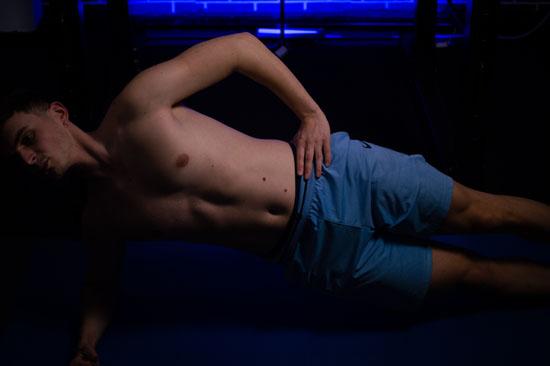
Yoga is a fantastic way to treat scoliosis without surgery. It focuses on spine realignment, relaxation in the muscles, and stretching of the muscles and ligaments.
Yoga both strengthens and lengthens. In a study, patients with scoliosis who practiced the side plank pose saw an average improvement in the Cobb angle of 45%. This practice significantly reduces scoliosis curvature by strengthening the convex side of the curve.
As written by MedicalNewsToday, yoga is fantastic for people with scoliosis. Poses like the Cat, the Tree, and the Mountain are beneficial. The breathing work in yoga will also improve the lung capacity in pectus excavatum patients. After each yoga session, you will feel more energized.
CONCLUSION
The pectus excavatum deformity can worsen the severity of scoliosis. If left untreated, scoliosis can worsen and cause problems to your well-being.
A patient's heart with a funnel chest is compressed and pushed to the side. That creates pressure on the spine, which, with time, curves even more, further worsening scoliosis.
There is scientific evidence that undergoing a Nuss procedure can improve scoliosis. However, if the curvature is severe, the surgery can further aggravate it.
Also, there is evidence that the Nuss procedure can also cause scoliosis. If you suffer from pectus excavatum, you will probably have dextroscoliosis (a spine that curves to the right).
On the other hand, it is less common to suffer from levoscoliosis. There are a few treatment options. The most effective non-surgical treatments are bracing and performing corrective exercises.
However, I recommend you visit an orthopedic doctor to examine the curvature. The doctor will tell you precisely what you need for your case.
18 Sources
- Scoliosis. In: Wikipedia [Internet]. 2022 [cited 2022 Dec 1]. Available from:
https://en.wikipedia.org/w/index.php?title=Scoliosis&oldid=1124720560 - Scoliosis - Symptoms and causes - Mayo Clinic [Internet]. [cited 2022 Dec 1].
Available from: https://www.mayoclinic.org/diseases-conditions/scoliosis/symptoms-causes/syc-20350716 - Diminished pulmonary function in pectus excavatum: from denying the problem to finding the mechanism - PMC [Internet]. [cited 2022 Dec 1]. Available
from: https://www.ncbi.nlm.nih.gov/pmc/articles/PMC5056935/ - Scoliosis: MedlinePlus Medical Encyclopedia [Internet]. [cited 2022 Dec 1]. Available from: https://medlineplus.gov/ency/article/001241.htm
- Scoliosis after pectus excavatum correction: does it improve or worsen?† | European Journal of Cardio-Thoracic Surgery | Oxford Academic [Internet]. [cited
2022 Dec 1]. Available from: https://academic.oup.com/ejcts/article/52/1/76/3063379 - Why the Cobb Angle Is Used to Diagnose Scoliosis [Internet]. Verywell Health.
[cited 2022 Dec 1]. Available from: https://www.verywellhealth.com/cobbs-angle-and-scoliosis-296583 - Meng Y, Lin T, Shao W, Gao R, Zhou X. Acquired scoliosis following Nuss procedure for pectus excavatum. Medicine (Baltimore). 2019 Jan 4;98(1):e13855.
- Shu Q, Shi Z, Xu WZ, Li JH, Zhang ZW, Lin R, et al. Experience in minimally invasive Nuss operation for 406 children with pectus excavatum. World J Pediatr.
2011 Aug;7(3):257–61. - Hong JY, Suh SW, Park HJ, Kim YH, Park JH, Park SY. Correlations of adolescent
idiopathic scoliosis and pectus excavatum. J Pediatr Orthop. 2011
Dec;31(8):870–4. - Effects of Pectus Excavatum on the Spine of Pectus Excavatum Patients with
Scoliosis [Internet]. [cited 2022 Dec 1]. Available from:
https://www.hindawi.com/journals/jhe/2017/5048625/
377 - Berdan EA, Nuckley DJ, Poly DW, Saltzman DA. Double crush to the thorax:
Pectus excavatum and kyphoscoliosis. Journal of Pediatric Surgery Case Reports. 2014 Jan 1;21:8–11. - Horne JP, Flannery R, Usman S. Adolescent idiopathic scoliosis: diagnosis and
management. Am Fam Physician. 2014 Feb 1;89(3):193–8. - Dextroscoliosis [Internet]. Healthline. 2020 [cited 2022 Dec 2]. Available from:
https://www.healthline.com/health/dextroscoliosis - Dextroscoliosis: Types, exercises, and treatment [Internet]. [cited 2022 Dec
2]. Available from: https://www.medicalnewstoday.com/articles/320457 - Scoliosis: The best stretches and exercises [Internet]. [cited 2022 Dec 2].
Available from: https://www.medicalnewstoday.com/articles/325385 - SRS Statement on Physiotherapy Scoliosis Specific Exercises | Scoliosis Research Society [Internet]. [cited 2022 Dec 2]. Available from:
https://www.srs.org/about-srs/quality-and-safety/position-statements/srs-statement-on-physiotherapy-scoliosis-specific-exercises - Physiotherapy scoliosis-specific exercises – a comprehensive review of seven
major schools - PMC [Internet]. [cited 2022 Dec 2]. Available from:
https://www.ncbi.nlm.nih.gov/pmc/articles/PMC4973373/ - Serial Case Reporting Yoga for Idiopathic and Degenerative Scoliosis - PMC
[Internet]. [cited 2022 Dec 2]. Available from:
https://www.ncbi.nlm.nih.gov/pmc/articles/PMC4268609/


